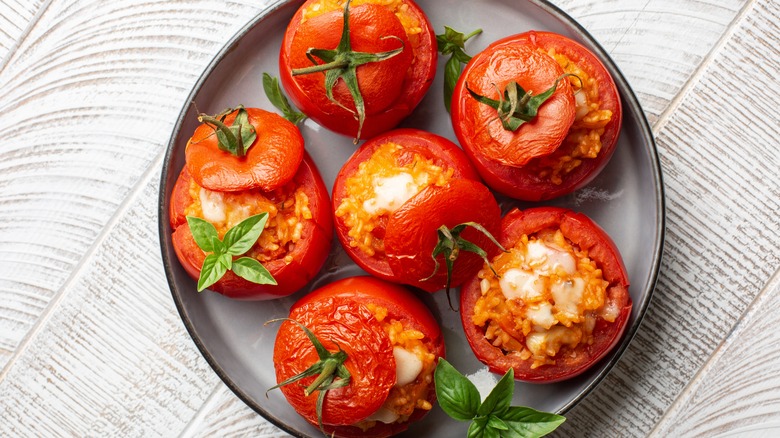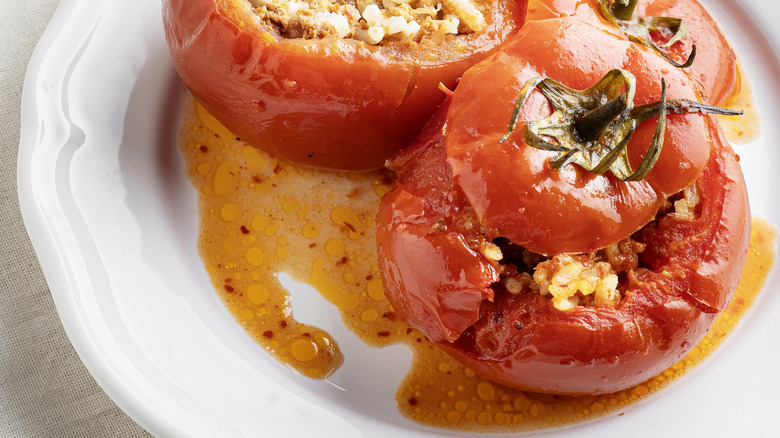Why It's Crucial To Let Stuffed Tomatoes Rest After Baking
Stuffed foods are better than non-stuffed foods. Although there are exceptions to the rule (the turducken comes to mind), stuffed produce and proteins are generally well-received. The reason being that stuffing juxtaposes flavors and textures in a way that delights the senses, even visually. Yet, aside from flashy filled treats like donuts or jalapeño poppers, one stuffed food that doesn't get enough attention is the tomato. Boasting unparalleled deliciousness, we won't deny that it can be tough to enjoy if you don't let it cool prior to digging in.
The obvious reason to let food rest after it's done cooking is to prevent injuries like mouth burns. However, the other reason why waiting is wise is simply because decadently stuffed tomatoes need time to set. Much like casseroles or pies, prematurely cutting into a stuffed tomato before it has the chance to cool will cause fillings to escape. As a result, the structure of the tomato will be compromised, which can make for messier dining.
In order to keep stuffed tomatoes looking and tasting their best, let them rest for a minimum of 20 minutes after pulling them from the oven. This will allow the juices to reabsorb and give the tomatoes time to firm up. That said, even slicing into a totally cooled tomato will release an abundance of juices. But, despite these flavorful liquids pouring out, the advantage is that stuffing will stay exactly where it should — inside the tomato.
Keep stuffed tomatoes intact from the get-go
Preventing stuffed tomatoes from falling apart starts with choosing the right tomato. While it's important to select a variety that's big enough to accommodate stuffing, the ideal tomato should also be meaty and not terribly watery so as not to produce a soggy, slouched-over result. It's for this reason that we're fans of a sturdy beefsteak tomato. Additionally, note that working with ripe produce may guarantee richer and more vibrant flavors, but an overly ripe tomato can also prove too soft to withstand stuffing and baking. Instead, aim for tomatoes that are relatively firm with some slight give.
The next issue of business is proper prep. After hollowing out each tomato, sprinkle them with salt and leave them upside down to drain, letting the salt draw out excess liquid to ensure the tomatoes remain as plump as possible. Of course, choosing the right fillings can also make a difference. Ingredients that absorb liquid like rice, quinoa, or bread crumbs are great stuffing components. Likewise, make sure to cook (even if just partially) frozen vegetables or those with a high concentration of water, as this too can reduce the risk of tomatoes falling apart once you're ready to dig in.
Although it can be tough to let your creation cool completely, you owe it to yourself to exercise some patience after faithfully following these tomato-stuffing tips. After all, good things come to those who wait — and a perfectly stuffed tomato is no exception.

